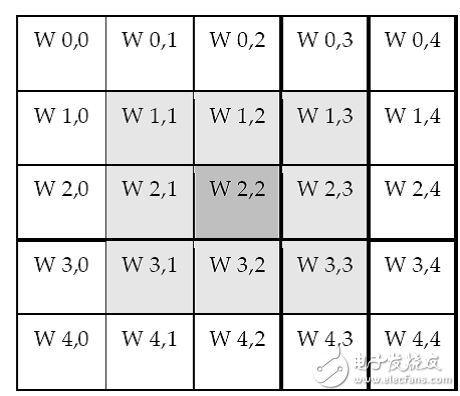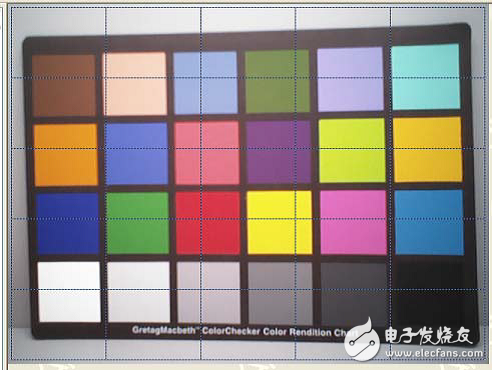Detailed AP0100CS image signal processor
ApTIna's AP0100CS is a powerful image signal processor that combines with its industry-leading low-light CMOS sensor technology to deliver high-resolution CCTV camera solutions with either standard dynamic range (SDR) or wide dynamic range (WDR). This advanced chip integrates ApTIna’s sophisticated image processing pipeline, delivering exceptional video quality and excellent performance in low-light conditions. The AP0100CS features an advanced Local Tone Mapping (ALTM) function, which ensures high-quality video even in challenging lighting environments with extreme contrast. Additionally, it includes an NTSC/PAL encoder with enhanced conversion capabilities, enabling the system to meet the resolution demands of traditional analog CCTV systems.
The AP0100CS allows Chinese designers to develop new types of surveillance cameras that were previously unavailable. These cameras can now offer high-resolution imaging, superior low-light performance, and WDR capabilities typically found in high-end IP cameras, all while operating in analog CCTV environments. This level of flexibility opens up exciting opportunities for innovation in the security market.
Auto Exposure
The auto exposure algorithm optimizes scene exposure to minimize clipping and saturation in critical areas of the image. It achieves this by controlling the exposure time, analog gain, and digital gain applied to the image. Running on an embedded microcontroller, the algorithm analyzes image statistics collected by the exposure measurement engine, makes decisions, and programs the sensor and color pipeline accordingly. The measurement engine divides the image into 25 windows arranged in a 5x5 grid, allowing for precise control over exposure across different regions of the frame.


Figure 16: 5 x 5 Grid
AE Track Driver
Additional features of the algorithm include the ability to reject fast fluctuations in illumination through time averaging, control the speed of response, and adjust sensitivity to small brightness changes. While default settings are sufficient for most applications, users can customize target brightness, measurement window, and other parameters. The driver adjusts AE parameters such as integration time and gains to bring the scene brightness to the desired level.
To prevent unwanted reactions from the AE system to minor brightness fluctuations or temporary changes in the scene, the AE track driver employs a temporal filter for luma and sets a threshold around the AE luma target. The driver only modifies AE parameters if the filtered luma exceeds the target step and pushes the luma beyond the defined threshold.
Auto White Balance
The AP0100CS includes a built-in Auto White Balance (AWB) algorithm designed to compensate for variations in the spectral composition of the scene's illumination, ensuring accurate color rendition. The algorithm consists of two main components: a measurement engine that performs statistical analysis of the image, and a driver that selects the optimal color correction matrix and IFP digital gain. Although default settings work well in most cases, users can reprogram the base color correction matrices, set limits on color channel gains, and adjust the speed of both matrix and gain updates.
The AP0100CS AWB displays the current white balance position in terms of color temperature, and the range of this value is defined when programming the CCM matrices. Users can also control the region of interest using a combination of inclusion and exclusion windows.
Exposure and White Balance Settings
The Sensor Manager firmware component is responsible for managing the application of 'exposure' and 'white balance' within the system. This means that all control of integration times and gains—whether for exposure or white balance—is handled by the Sensor Manager. The Auto Exposure (AE) and Auto White Balance (AWB) algorithms rely on services provided by the Sensor Manager to implement exposure and/or white balance adjustments.
Exposure and White Balance Mode
The AP0100CS supports both automatic and manual exposure and white balance modes. It also operates effectively in synchronized multi-camera systems. In such setups, one camera acts as the 'master,' while others function as 'slaves.' The master calculates the appropriate exposure and white balance, which is then applied to all slave cameras simultaneously under host control.
Automatic Mode
In Auto Exposure mode, the AE algorithm determines the correct exposure to maintain the desired scene brightness and applies it to the underlying hardware. In Auto White Balance mode, the AWB algorithm calculates the scene's color temperature and applies the necessary red and blue gains to achieve accurate color reproduction.
Triggered Auto Mode
The Triggered Auto Exposure and Triggered Auto White Balance modes are specifically designed for multi-camera systems where a host controls the exposure and white balance of multiple cameras. In this scenario, one camera operates in triggered-auto mode (the master), calculating the appropriate exposure and gains. The host then transfers these values to the slaves, and all adjustments are applied at the same time, ensuring consistent performance across the entire system.
ceramic bearing,precise ceramic bearing
Yixing Guangming Special Ceramics Co.,Ltd , https://www.yxgmtc.com